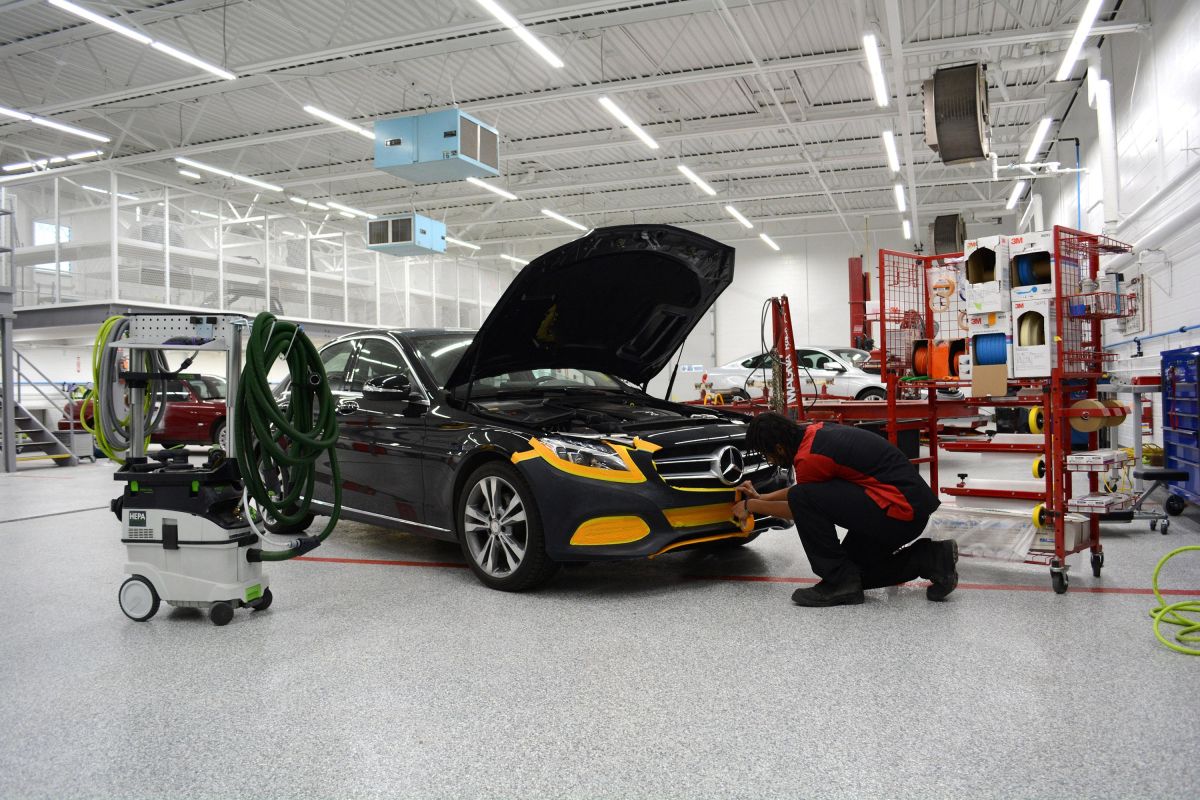The Collision Engineering Career Alliance (CECA) will add the North Dakota State College of Science (NDSCS) to its growing roster of partner schools this fall, bringing the program’s paid, two year apprenticeship model to the Northern Plains for the first time. The move aims to relieve a collision repair labor crisis that industry advocates say could leave more than 100,000 technician jobs unfilled by 2028.
“We’re committed to providing an ideal environment for students seeking both academic excellence and a well-rounded college experience,” said Terry Marohl, North Dakota State College of Science associate dean of transportation. “We’re excited to bring this program to students and to help strengthen the future of collision repair in our local communities.”
A Hybrid Model That Pays Students While They Learn
Under CECA’s format, students rotate every eight weeks between classroom instruction and paid shop assignments, enabling them to earn an income and gather live shop experience before graduation. The structure addresses two persistent shop management headaches: unpredictable entry level skill levels and high early career turnover.
CECA reports an 87.5% retention rate and 100% job placement for its pilot cohorts. Those metrics resonate with operators who cite labor churn as a top driver of cycle time delays and sublet costs.
Why the Plains Matter for Shop Management
NDSCS already runs an auto body repair and refinishing technology program equipped with computer measuring, paint mixing and ADAS calibration tools. Embedding CECA’s work based rotation into that existing infrastructure should accelerate output of work ready entry techs — critical for independent shops that cannot afford six month mentorship ramps.
The school draws students from North Dakota, South Dakota and Minnesota, giving CECA a multi state talent catchment the alliance has lacked to date. For regional MSOs, that could mean a steadier pipeline without competing head to head for graduates from distant metro markets.
The Technician Gap Is Bigger Than Collision Alone
The nonprofit TechForce Foundation warned in December that U.S. employers will need nearly 1 million new entrant automotive, diesel, aviation and collision techs between 2025 and 2030. Collision accounts for roughly one in 10 of those openings.
Federal data show the median annual pay for automotive body and related repairers hit $51,680 in May 2024, up 8% in two years, with 15,700 openings projected each year through 2033. Operators that cannot secure talent face longer key to key times, rising overtime costs and potential DRP penalties.
Inside the CECA Playbook
CECA, launched as a 501(c)(3) in February, standardizes curriculum across its partner campuses, supplies I CAR aligned coursework and helps sponsor tool sets, PPE and even student living expenses through donor funds. The alliance currently works with seven colleges; NDSCS will be the eighth.
Students alternate between school and “trusted collision repair facilities” chosen for their capacity to mentor apprentices. That eight week cadence mirrors the dealership technician programs many OEMs use, but with a collision specific twist: modules on structural repair, OEM procedures and advanced driver assistance system (ADAS) calibration — all areas where shops risk insurer pushback if work quality slips.
What Shop Owners Should Watch
Shop management teams in the Dakotas and western Minnesota can begin applying to host apprentices this summer, CECA officials said. Participating businesses must provide a dedicated mentor, adhere to curriculum milestones and offer paid hours that align with local wage thresholds.
Early adopters in other states say the arrangement has cut onboarding times by half and reduced rework rates because new hires arrive already fluent in blueprinting, estimating software and safety protocols.
Outlook: Scaling Beyond Eight Campuses
CECA’s long term plan is to reach 15 partner schools by 2027 and double annual graduate output. Funding remains the swing factor: the nonprofit relies on philanthropy from insurers, paint makers and rental car giant Enterprise Mobility, whose foundation seeded the original pilot at Ranken Technical College in St. Louis in 2020.
For operators, the math is straightforward. At today’s median wage, every unfilled body tech stall can cost $12,000–$18,000 in weekly lost throughput, depending on labor hours per repair. Programs like CECA give shops a share of the solution — but only if the industry steps up with sponsorships, equipment donations and, crucially, mentorship bandwidth.
NDSCS will welcome its first Collision Engineering cohort in August. Marohl said interested employers can contact him at terry.marohl@ndscs.edu for apprenticeship details.














